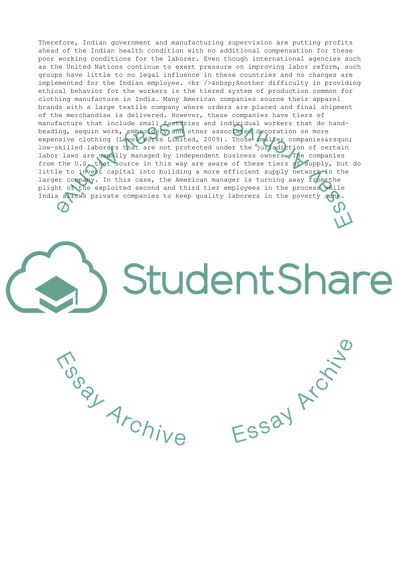Cite this document
(“Ethics and the Indian Laborer Essay Example | Topics and Well Written Essays - 1000 words”, n.d.)
Ethics and the Indian Laborer Essay Example | Topics and Well Written Essays - 1000 words. Retrieved from https://studentshare.org/business/1603150-ethics-and-the-indian-laborer
Ethics and the Indian Laborer Essay Example | Topics and Well Written Essays - 1000 words. Retrieved from https://studentshare.org/business/1603150-ethics-and-the-indian-laborer
(Ethics and the Indian Laborer Essay Example | Topics and Well Written Essays - 1000 Words)
Ethics and the Indian Laborer Essay Example | Topics and Well Written Essays - 1000 Words. https://studentshare.org/business/1603150-ethics-and-the-indian-laborer.
Ethics and the Indian Laborer Essay Example | Topics and Well Written Essays - 1000 Words. https://studentshare.org/business/1603150-ethics-and-the-indian-laborer.
“Ethics and the Indian Laborer Essay Example | Topics and Well Written Essays - 1000 Words”, n.d. https://studentshare.org/business/1603150-ethics-and-the-indian-laborer.


